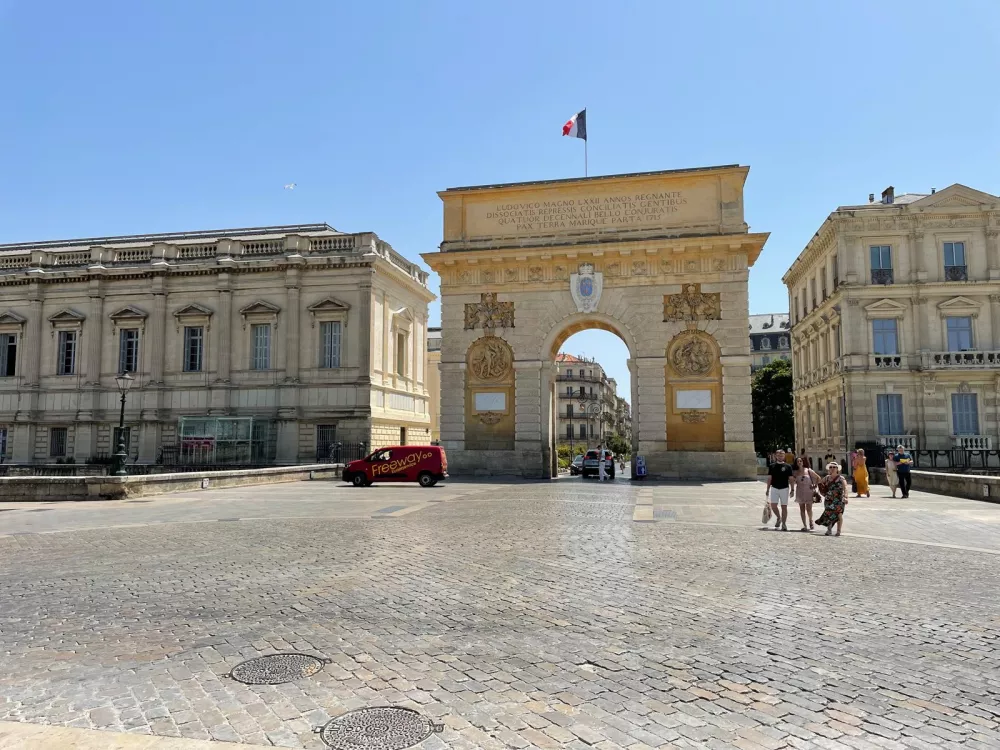Montpellier guide 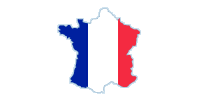
The city of sun, history and student life is located just a few kilometers from the Mediterranean Sea. The sun shines here up to 300 days a year - an ideal place for lovers of warmth and the good life. It mixes the medieval atmosphere of the historic center of Écusson, the modern architecture of the Antigone district and endless entertainment options at Place de la Comédie. Almost a third of the population are students, so there is never a dull moment here. :)
Sights and attractions - What should you not miss in Montpellier? Saint-Pierre Cathedral, Old Town L´Ecusson and others.
Accommodation - Tips for pleasant and popular accommodation, from a hostel in the center, to a guesthouse in the countryside, to luxury hotels.
Typical food and drinks - What you should try in Montpellier - bouillabaisse, tapenade, pastis or wines from the Languedoc-Roussillon region.
Practical tips - Here you can learn about local transport, customs and the like.
Weather - Four seasons in Montpellier. When does it rain the most and when, on the other hand, do you enjoy warm and sunny weather?
Celebrities - What famous personalities lived and worked in Montpellier.
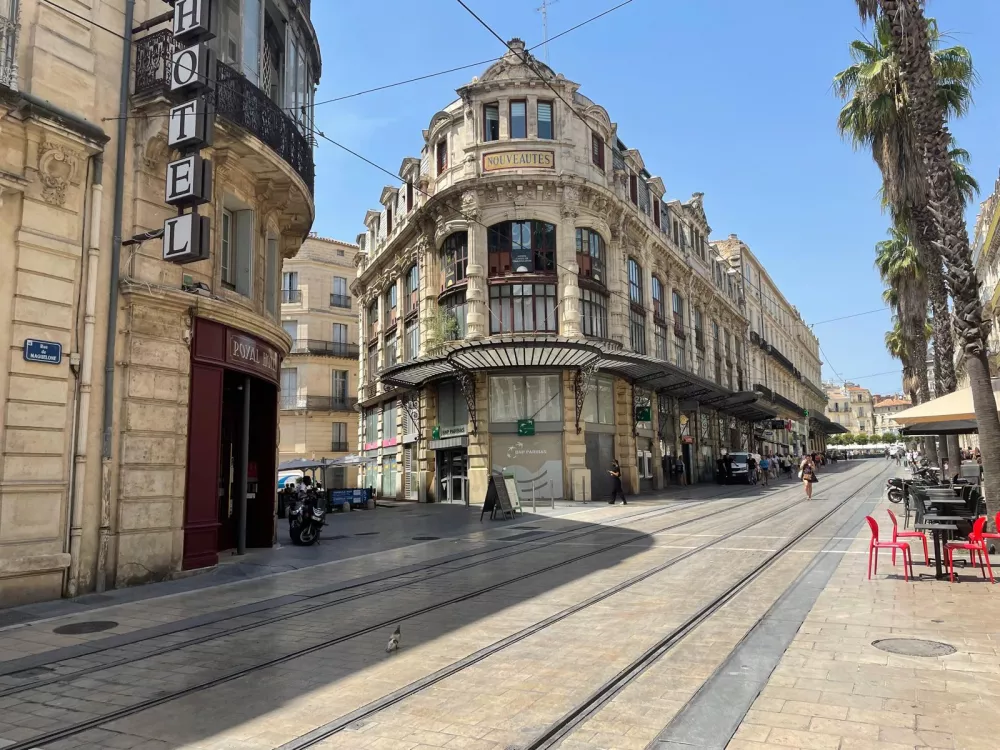
Montpellier is located in the south of France, in the Languedoc-Roussillon region. This historical and cultural center of the region is one of the oldest university towns in France. The city is proud of its rich history, beautiful architecture and lively cultural life.
Almost 300,000 inhabitants live here, of which about a third are students.
Montpellier is located near the Mediterranean Sea, thanks to which you can enjoy a pleasant Mediterranean climate with warm summers and mild winters.
They founded the city in the 10th century. It quickly became an important trade center. During the Middle Ages, textiles were mainly traded here. Education also played an important role.
The city has many historical monuments, including the Gothic Cathedral of Saint-Pierre, the old town with its narrow streets and Renaissance buildings.
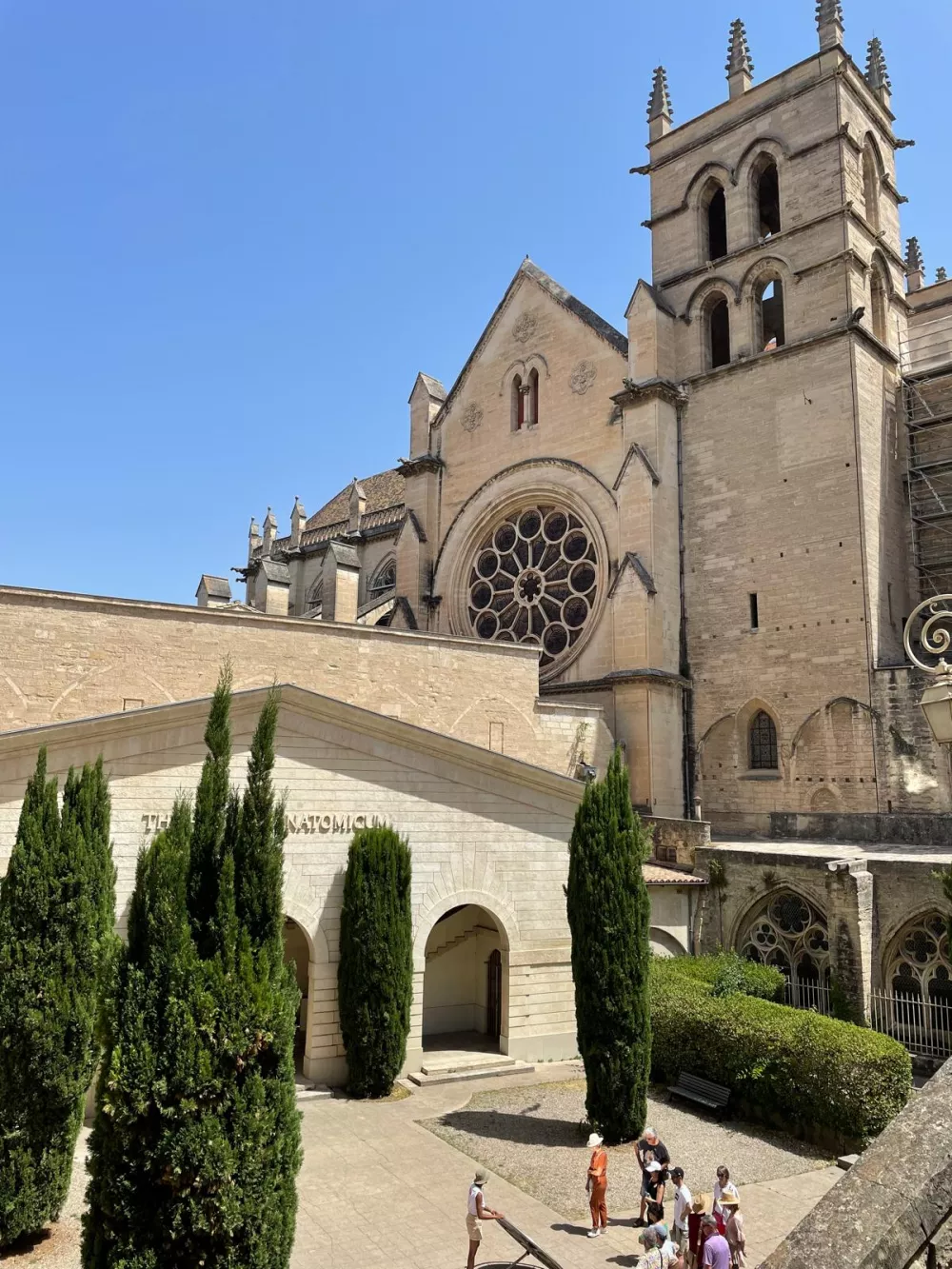
Montpellier is also famous for its rich cultural scene. It hosts many festivals, including the Montpellier Dance Festival and the Festival de Radio France et Montpellier, which focuses on classical music.
Montpellier is home to one of the oldest universities in France, Université de Montpellier, founded in 1289. Today, the city is a center of higher education with a number of universities and research institutions.
Montpellier has a diverse economy that includes sectors such as healthcare, biotechnology, information technology and tourism. It is also an important regional commercial and financial center.
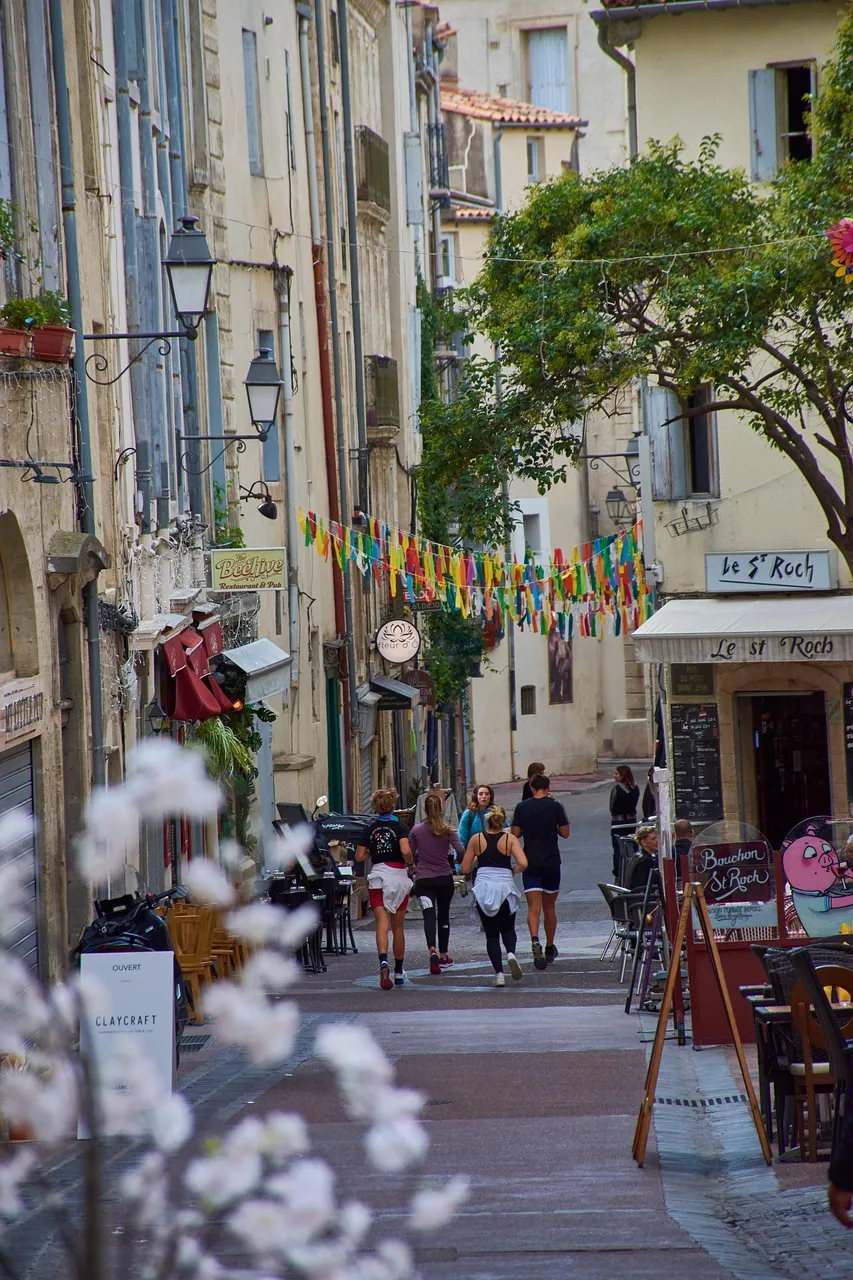
Sights and attractions
Saint-Pierre Cathedral - A Gothic cathedral built in the 14th century on the site of a 12th-century chapel of the monastery of St. Benedict. The tall tower offers a stunning view of the city. Saint-Pierre is the only medieval church in the center of Montpellier to have survived the turbulent period of the Wars of Religion. While other churches fell like dominoes, Saint-Pierre stood firm – perhaps thanks to its monumental columns at the entrance, which have an incredible diameter of 4.55 meters! These “columnar biceps” once bore the coat of arms of Pope Urban V, who started here as a student and teacher before becoming the head of the entire Catholic Church.
Address: 1 rue Saint-Pierre, Montpellier.
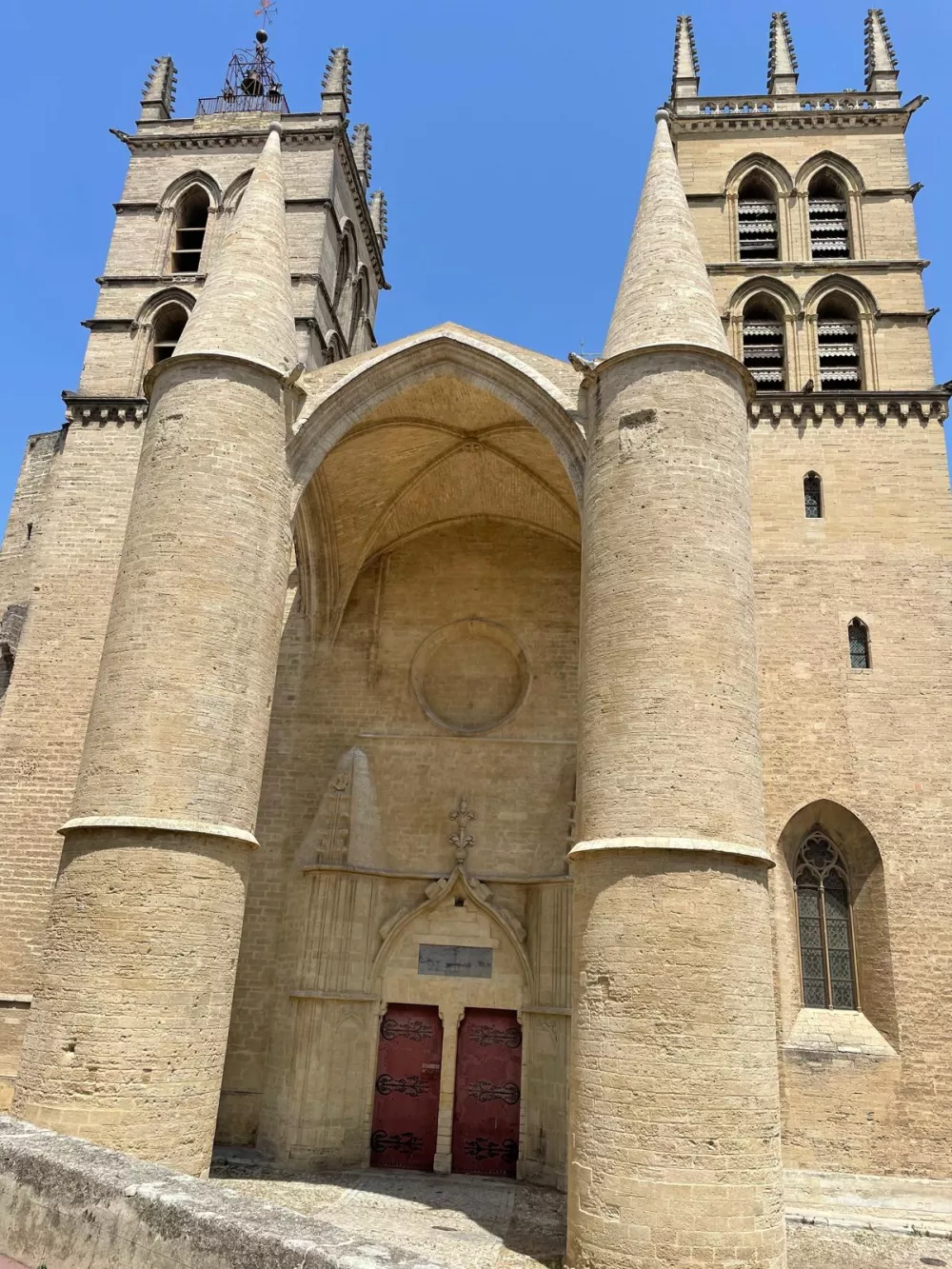
Old town (L´Ecusson) - The historic city center, where you can get lost in a maze of shady alleys, discover secret courtyards and have an espresso in the square where the nobility once debated. You will find not only the Saint-Pierre Cathedral, but also the Place de la Comédie, the Three Graces Fountain and so many cafes that you could try croissants all week. ;)
Address: L’Écusson, Montpellier.
Place de la Comédie - This large square is located in the city center. It is surrounded by elegant buildings, cafes and shops. It used to be a fortification, but now it is a place to relax and unwind. The locals call it “the egg”. Why? Because it is oval in shape, which resembles an egg – so when you wander around the Place de la Comédie, you can say that you have found yourself in the largest “egg” in the south of France. The square is dominated by the Fountain of the Three Graces. According to legend, if you touch the pedestal of the fountain, it will bring you good luck.
Address: Place de la Comédie, Montpellier.
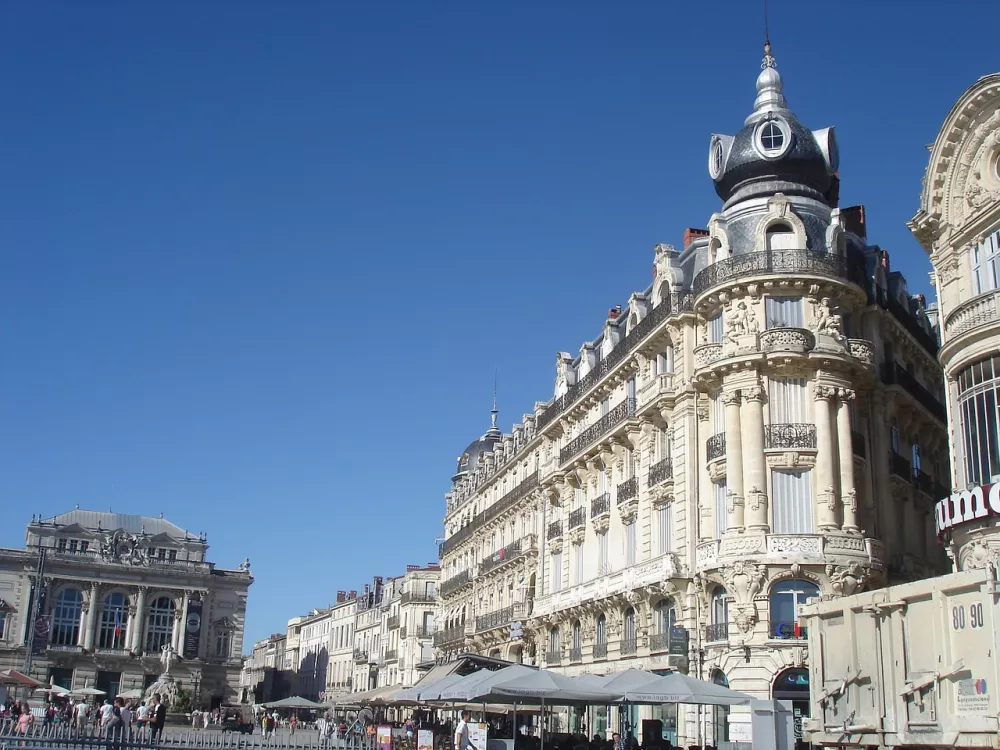
Promenade du Peyrou – This beautiful park is located on a hill above the city and offers wonderful views of Montpellier and the surrounding countryside. It also features an impressive fountain and the triumphal arch of Louis XIV. According to legend, no house in Montpellier was allowed to exceed the height of the outstretched arm of the statue of Louis XIV, which has been enthroned on the Peyrou since 1718. So if you have a picnic on the esplanade today, you can be sure that no skyscraper will shade you - you will enjoy the views of the city, the Cévennes and the sea without any obstruction.
Address: Place Royale du Peyrou, Montpellier.
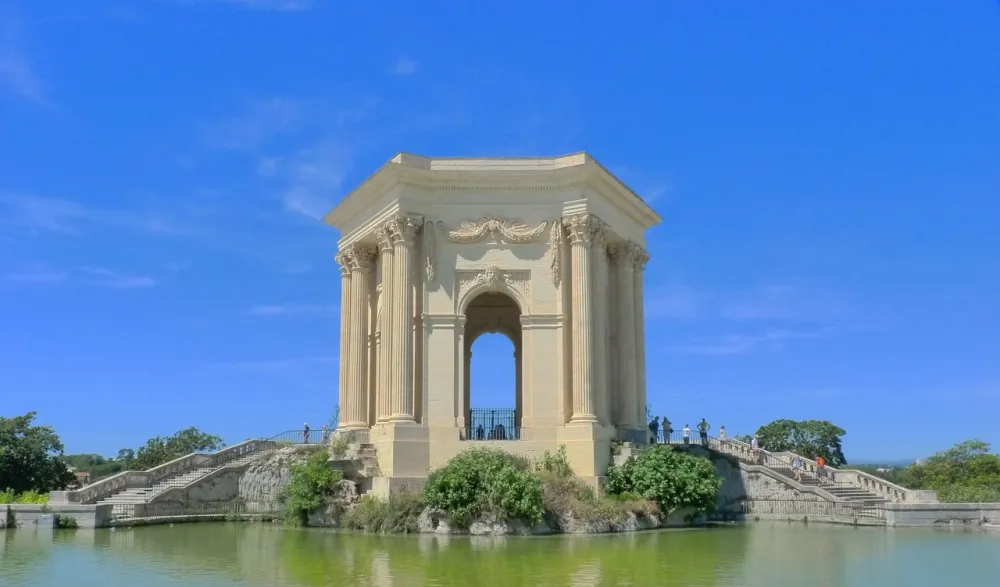
Aqueduct Saint-Clément – This monumental aqueduct has been bringing water to the city since the 18th century. It is one of the most striking and important monuments in the city. When it first brought clean water to the city in 1765, it was such an event that a water festival was celebrated on Peyrou – people cheered, fountains gushed and Montpellier was finally able to say goodbye to the eternally thirsty Middle Ages. The aqueduct has 51 monumental arches that stretch over 800 meters. It was inspired by the famous Roman Pont du Gard – so when you walk under the arches in the Les Arceaux district today, you are actually walking under the “French Rome” in miniature.
Address: Les Arceaux, Montpellier.

Musée Fabre - One of the most important museums in France. Here you can see extensive collections of European art from the Middle Ages to the present day. It was founded by the painter François-Xavier Fabre - in 1825 he donated his art collection to the city - and thus started a chain reaction of other donations from collectors and artists. Today you can find over 900 paintings, 900 engravings and 3,500 drawings, by masters such as Rubens, Delacroix, Courbet and even the “black master” Pierre Soulage, whose monumental Outrenoirs have their own luminous “sanctuary” in the museum.
Address: 39 boulevard Bonne Nouvelle, Montpellier.
Jardin des Plantes – The historic botanical park and arboretum offers peaceful walks among rare plants and exotic trees. The oldest botanical garden in France was founded in 1593 by Pierre Richer de Belleval on the orders of King Henry IV. Originally, it was intended for medical students to learn how to recognize medicinal plants. So when you walk among palm trees, bamboos and cacti today, you are actually walking on paths where future doctors were once taught how to correctly distinguish chamomile from hemlock. In the garden you will find the “wishing tree”, which is not only the oldest tree in the park (it is over 400 years old!), but also a place where locals and tourists hide their secret wishes among its branches.
Address: 1 boulevard Henri IV, Montpellier.
Aquarium Mare Nostrum (Planet Ocean World) - This modern aquarium specializes in Mediterranean fauna and flora. Visitors can see a wide range of marine creatures in their real-life habitat. There are also feeding demonstrations. Mare Nostrum is home to over 400 species of marine creatures, including sharks, rays, penguins and jellyfish, in a giant aquarium with over 2.9 million liters of water. But what’s really unique? You can experience a storm simulator on board a cargo ship, where you can find out what it’s like to be a sea lion in a real storm.
Address: Allée Ulysse, Montpellier.
Accommodations
In this sunny destination, you can choose from a wide range of accommodation options. Accommodation here is offered by around 1000 different accommodation providers, from beautiful and prestigious hotels, villas, boarding houses, apartments to cheap hostels. We can recommend accommodation in the very center of the city near the Place de la Comédie, the Jardin des Plantes or near the Montpellier-Saint-Roch main train station.
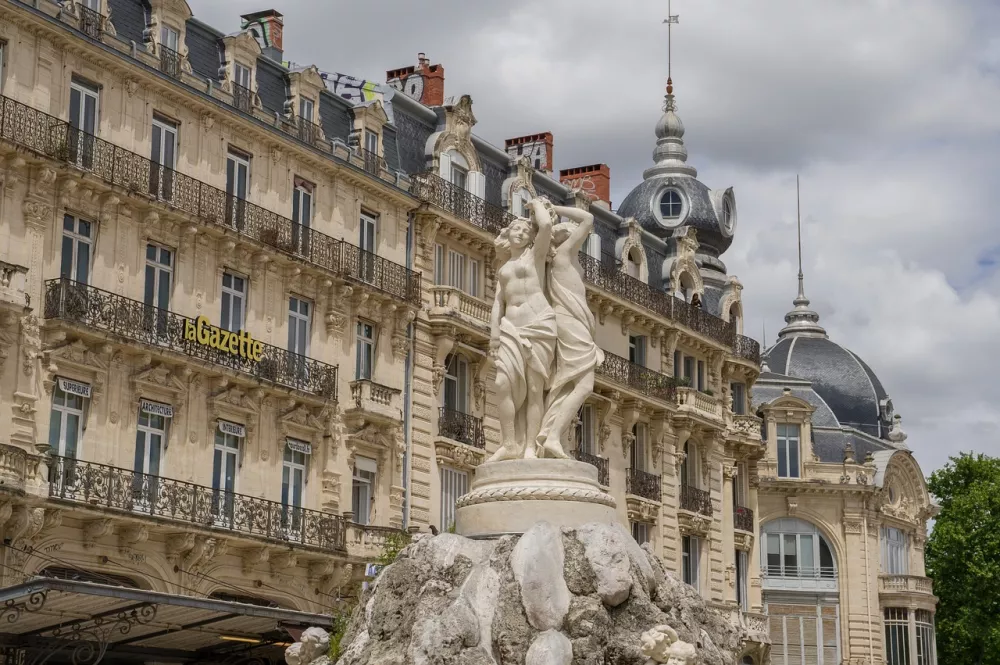
You can indulge in luxury at the 5* Domaine de Verchant & Spa - Relais & Châteaux. This former villa offers elegant accommodation with the latest technical equipment. There is a modern wellness and fitness center, sauna, tennis court, indoor and outdoor pools.
Luxury in the historic center of the city is offered, for example, by the 4* hotel Pullman La Pléiade Montpellier Centre. You can relax here, for example, by the rooftop swimming pool, heated from April to October. You can enjoy the food of a local restaurant, for example, on the sunny terrace. The hotel offers wellness services, fitness, saunas, massages, valet parking and much more.
Affordable accommodation in the city center is offered, for example, by the 3* Hotel du Palais in a historic 200-year-old building. Breakfast is served either in the stylish dining room or directly to your room. You can store your luggage at the 24-hour reception or arrange parking in the garage.
The pleasant guesthouse Couette et Café is located in a quiet area 3 km from the city center. You can relax on the terrace overlooking the garden. You will find a coffee machine in the room, and you can prepare food in the shared kitchen. Breakfast is already included in the price.
Cheap accommodation close to the city center is offered by the JOST Auberge de jeunesse Montpellier Center St Roch hostel. Undemanding travelers will find everything they need here: shared kitchen, restaurant, terrace, seasonal outdoor pool. The hostel also organizes an evening entertainment program.
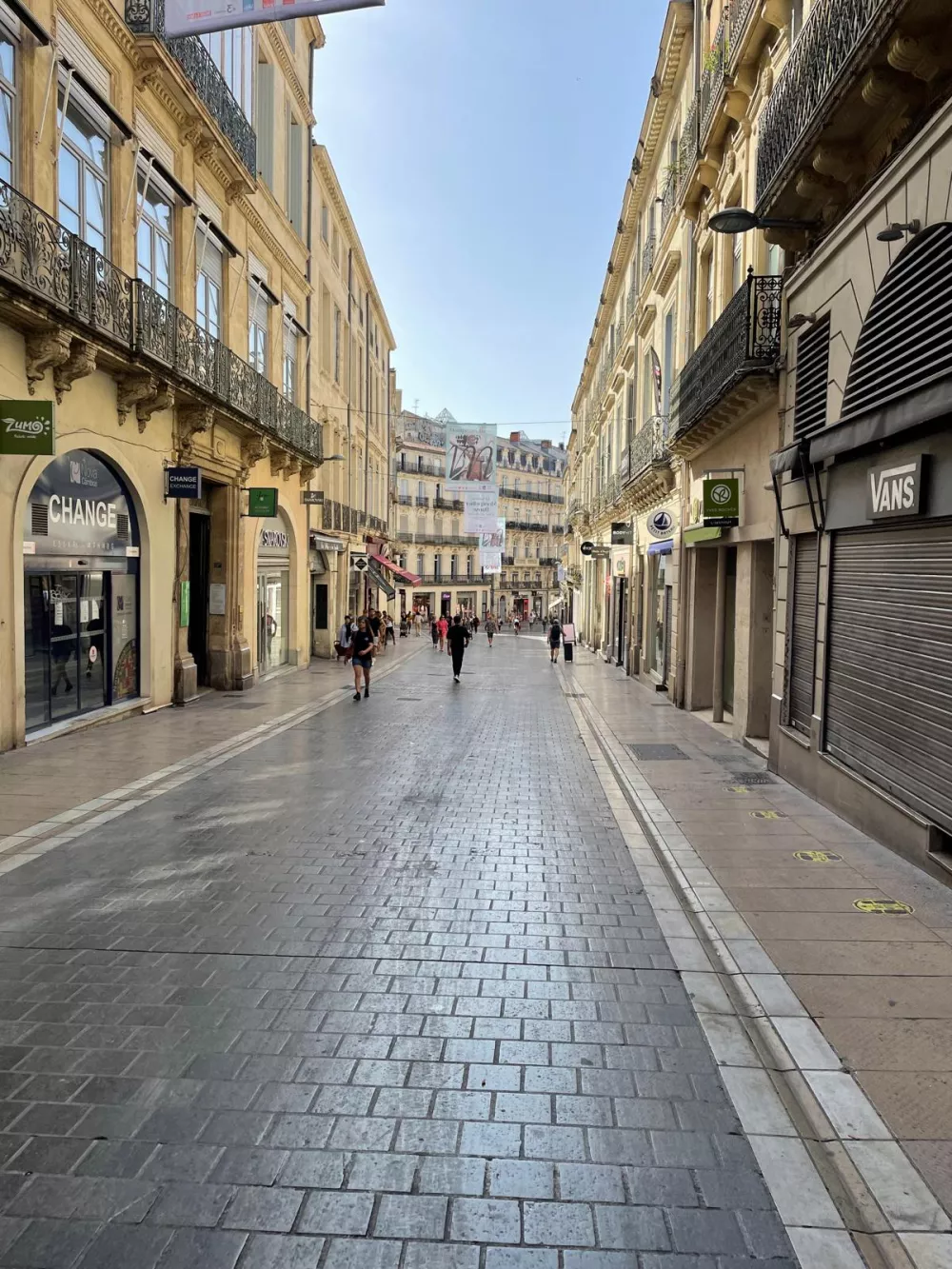
For a complete offer of accommodation in Montpellier, we recommend using A-HOTEL.com or Booking.com.
Typical food and drinks
In Montpellier and the surrounding Languedoc-Roussillon region, you will find a rich selection of traditional foods and drinks that reflect the regional culinary culture of the Mediterranean.
Bouillabaisse - Traditional Mediterranean fish dish. This southern French specialty is prepared from various types of fresh fish and seafood cooked in an aromatic tomato and fish sauce.

Brandade de morue – Dip, made from a noble piece of cod mixed with olive oil, garlic and milk or cream. They serve it with grilled bread or potatoes.
Tielle Sétoise - This traditional dish comes from the nearby town of Sète. It is a type of filled cake. The pastry is filled with seafood (calamari, octopus, fish or mussels) in a spicy tomato sauce.
Tapenade - This popular aperitif dish is made with olives, capers, anchovies, garlic and olive oil. Everything is mixed into a smooth paste and served with crusty bread or a grilled baguette.
Languedoc-Roussillon Wines - Known for its winemaking traditions, this region offers a wide range of delicious wines, red, white and rosé. Popular varieties include Carignan, Syrah, Grenache for red wines and Chardonnay, Viognier and Muscat for white wines.

Pastis - This anise herbal aperitif, very popular in the Mediterranean, is traditionally mixed with water or ice to create a refreshing drink.
Practical advice
Montpellier has a Mediterranean climate with warm summers and mild winters, so pack light clothing and shoes that are comfortable for walking around the city.
Public transport in Montpellier works very well. Includes trams and buses. You can buy a one-day or weekly ticket that is valid for all modes of transport.
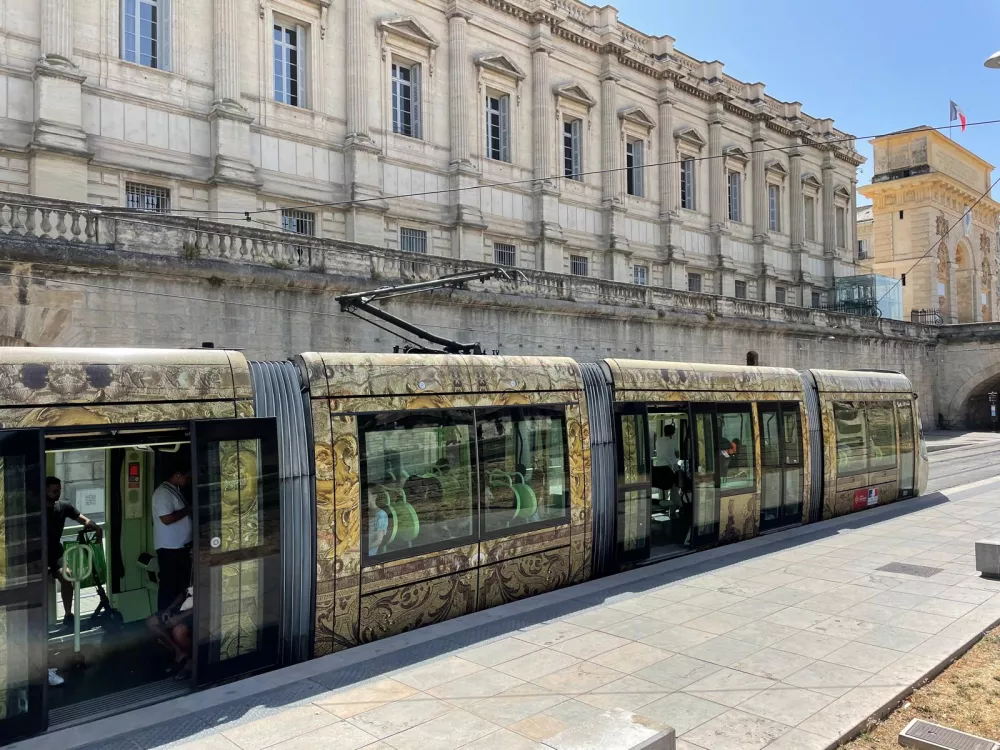
Before you visit, plan the main attractions you want to see and find out opening hours and entrance fees. You can enter the cathedral for free, but you should buy tickets in advance online for the Musée Fabre or Aquarium Mare Nostrum.
Although many people speak English in Montpellier, it will be useful to learn the basics of French. The locals will appreciate your effort and willingness to communicate in their language.
Apart from Montpellier itself, you will find many other interesting places to explore nearby, such as the Mediterranean beaches, the historic cities of Nîmes and Avignon or the vineyards and villages inland.
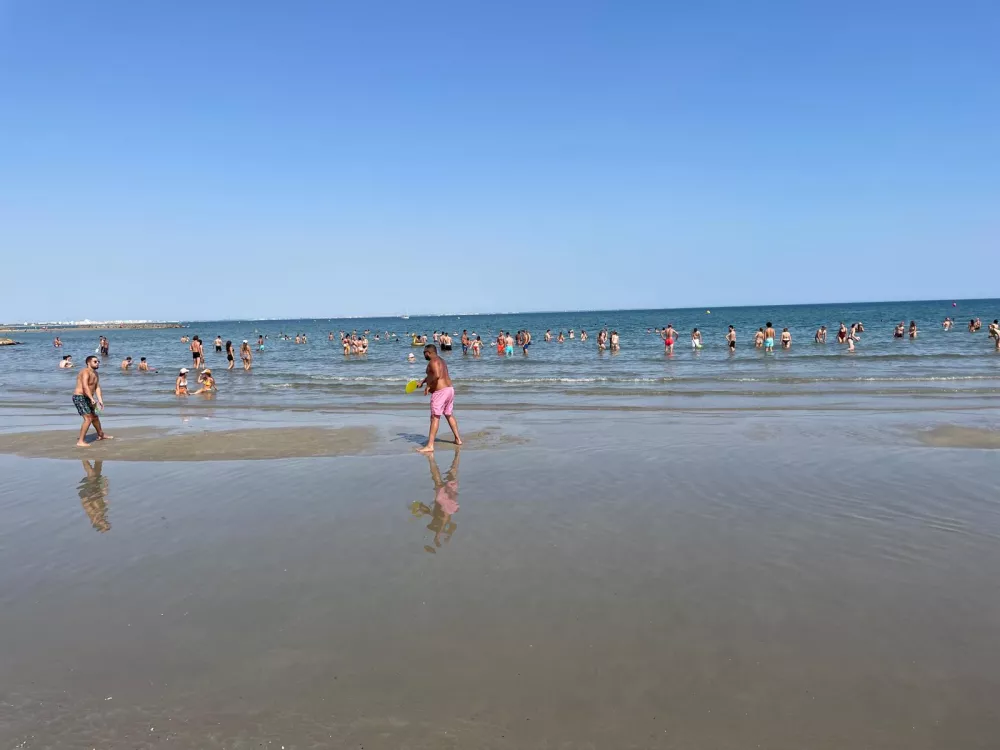
Weather
Montpellier has a Mediterranean climate. There are warm and dry summers, mild and wet winters.
The summer months (June - September) are hot and dry in Montpellier, with average maximum temperatures around 28-32°C. The days tend to be very sunny and warm, which makes for pleasant weather for outdoor activities and being at the beach.
During the autumn months (October – November), temperatures gradually drop. Average maximum temperatures are around 20-24 °C. It rains more in autumn.
Winters (December - February) in Montpellier are mild and wet. Average minimum temperatures are around 3-5 °C and average maximum temperatures around 11-14 °C. Colder days can occasionally come, but it rarely snows.
In spring (March - May) you can enjoy mild and sunny weather in Montpellier. Temperatures gradually rise, with average maximum temperatures around 15-20 °C in March and 20-25 °C in May. In spring, flowers begin to bloom and greenery comes to life.
Overall, Montpellier has a pleasant Mediterranean climate, ideal for tourists who want to enjoy sunny and warm days.
Celebrities
Montpellier has a rich history associated with a number of notable figures from various fields, including art, science, politics and culture. Some of these personalities include:
Nostradamus (Michel de Nostredame 1503 - 1566) - Famous astrologer, physician and writer. Nostradamus was born near Montpellier. He became famous for his prophecies, which he wrote down in a collection called "Prophecies", which still fascinates many people today.
Alfred Naquet (1834 – 1916) - French physician, chemist and politician. He was born near Montpellier. He was one of the main supporters of the introduction of universal suffrage in France and also played a key role in the legalization of contraception.
Georges Frêche (1938 – 2010) - Politician and former mayor of Montpellier. He played a significant role in the modernization and development of the city.
Jean Moulin (1899 – 1943) - French resistance fighter and World War II hero. He played a key role in uniting the various resistance groups in southern France. He was one of the leading figures of the French resistance against the Nazi occupation.
Louise Labé (1524 – 1566) - Famous French Renaissance poet and writer. She was also called "La Belle Cordière" (the beautiful corder). Although she was not born in Montpellier, she often stayed here.
